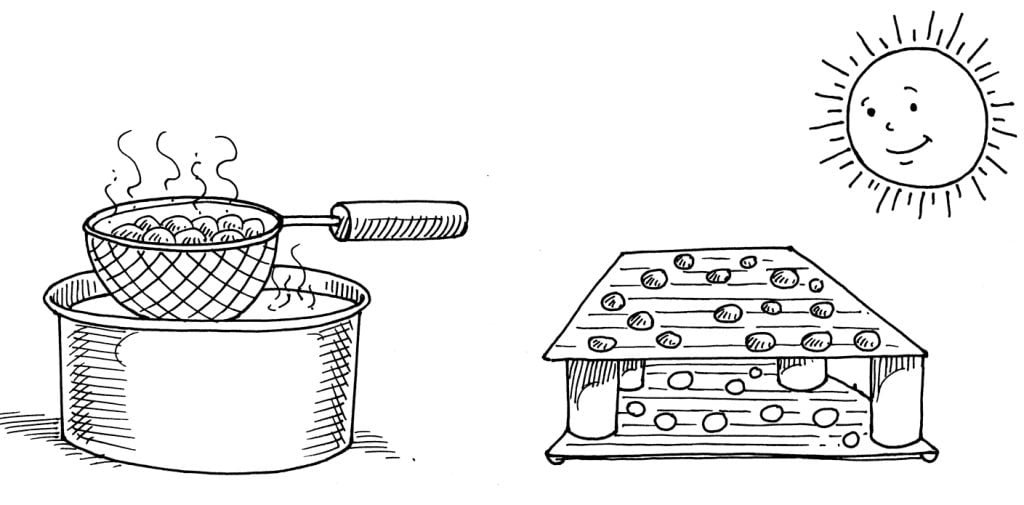
A raisin starts life as a grape and a prune as a plum. What happens to these juicy fruits? See for yourself.
Things Required:
Launch of white seedless grapes
2 drying trays (make your own by spreading cheesecloth or wire mesh over old frames or kitchen cooling racks)
A pot of boiling water
A strainer
4 empty juice cans or large stones
Directions:
Wash the grapes in cold water and remove those that are bruised. Pull out the stems and place the cleaned grapes in a strainer. Dip them into a pot of boiling water so that the skins may break. Spread the grapes on one of the drying trays so that they may not touch. Using the empty cans, prop the second tray over the first. There are two methods you can use. For four or five days, place the trays by a sunny window, turning them every hour so that the fruit may dry evenly.
Or place the trays on the middle rack of a preheated oven (140°F) (60°C) and let them remain overnight.
When you think they may be dry, remove one or two of the grapes. Let them cool, and test them for moisture. If they still have water in them, let the fruit dry for another hour or so. Then test. If the grape is pliable and chewy, remove the rest from the drying tray.
This Is What Happens:
You have raisins!
Put them in a plastic bag and they will last for months and months.
Science Behind It:
Drying as a means of preservation is thousands of years old. Normally fruit rots in a week or less at room temperature. Even in the refrigerator, it will rot after a few weeks.
Fungi that start as spores-tiny seedlike cells-drop from the air and feed on the sugars of fruit and starches. When you dry out the grapes, you are taking away the moisture that the fungi need in order to grow. As long as the dried fruit can’t take in moisture from the air, it will stay edible for many months.

